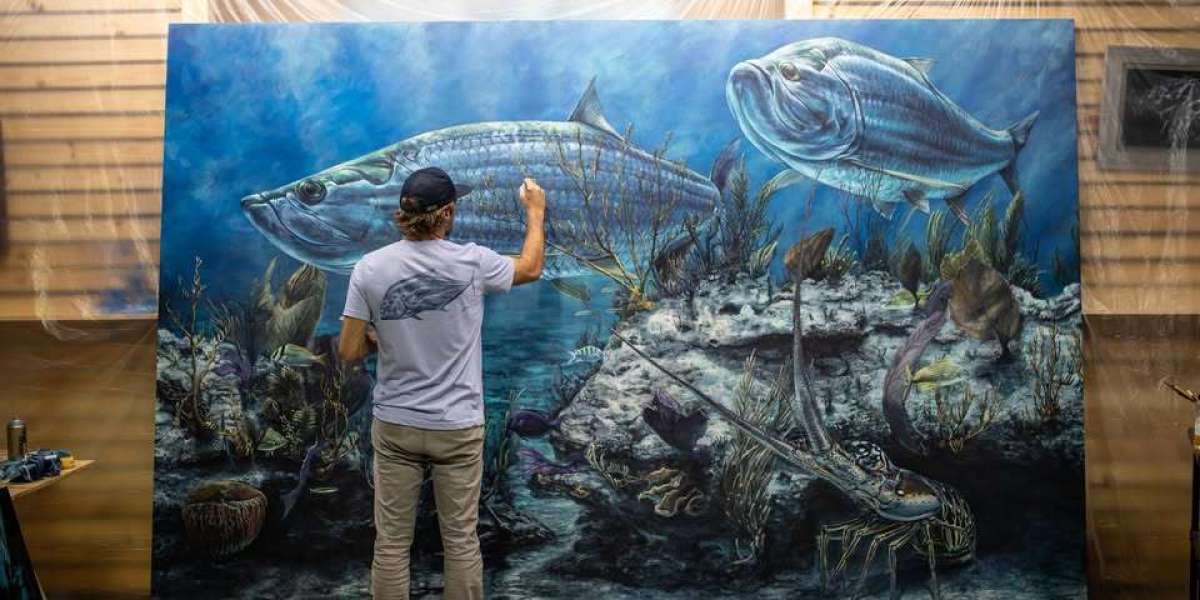There’s something about the sea that stirs the soul. Its vastness can be calming or terrifying. Its rhythm, both constant and ever-changing. For centuries, artists have been drawn to the water—not just to capture its visual beauty, but to express the deeper emotions it evokes. This is the world of marine art.
From historic seascapes and ship portraits to abstract interpretations of wave and light, marine art is more than just pictures of boats or beaches. It’s a genre rich with history, emotion, and a deep connection to the natural world. Whether you’re a lifelong sailor or simply someone who finds peace in the sound of the surf, marine art has a way of speaking to something universal.
A Brief History: Where It All Began
Marine art dates back to ancient times, but it truly came into its own during the 17th century. In the Netherlands, during the Dutch Golden Age, artists like Willem van de Velde and Ludolf Bakhuizen rose to fame painting ships and naval battles. These works weren’t just decorative—they were often commissioned to commemorate victories or showcase naval power.
By the 18th and 19th centuries, marine art expanded in both style and purpose. British artists like J.M.W. Turner began to use the sea as a symbol—of power, of the unknown, of human fragility. Turner’s turbulent seascapes weren’t just accurate; they were emotional, raw, and wildly ahead of their time.
Meanwhile, American artists like Winslow Homer depicted coastal life in New England, capturing both the beauty and the danger of the sea. His famous work “The Gulf Stream” shows a lone man adrift in shark-infested waters—powerful, haunting, and deeply human.
What Defines Marine Art?
At its heart, marine art is art inspired by the ocean and the life that surrounds it. That could mean a detailed painting of a tall ship battling a storm, or a minimalist watercolor of a quiet beach. It includes:
- Seascapes – dramatic or serene views of the ocean
- Ships and boats – from historic vessels to modern yachts
- Harbors and coastal scenes – places where land meets sea
- Marine wildlife – whales, dolphins, seabirds, and more
- Abstract and contemporary interpretations – where the sea becomes a metaphor
The common thread isn’t the subject—it’s the feeling. Marine art often carries a sense of movement, mood, and awe. It invites the viewer to step into a moment shaped by wind, water, and weather.
Why the Sea Inspires
So what is it about the sea that continues to inspire artists? For many, it’s the symbolism. The sea represents freedom, isolation, adventure, and even danger. It’s a place of beginnings and endings, of mystery and reflection.
The constant motion of the water also presents a technical challenge. Capturing the fluidity of waves, the shimmer of light on water, or the heaviness of a foggy morning isn’t easy—and that’s part of the appeal. For painters, it’s a subject that demands skill, patience, and a good deal of emotional intuition.
For others, especially those who live near the coast or have worked at sea, marine art is personal. It can be a way to preserve memories, tell stories, or honor heritage. For coastal communities, the ocean isn’t just scenery—it’s life itself.
Modern Marine Art: Expanding Horizons
Today’s marine artists still pay homage to tradition, but many are pushing boundaries. You’ll find:
- Hyper-realistic oil paintings that feel like photographs
- Loose, expressive watercolors that focus more on mood than detail
- Mixed-media pieces that use sand, shells, and driftwood
- Abstract seascapes that evoke feelings of vastness or depth without showing a single boat or wave
Marine art isn’t stuck in the past. It’s evolving with new materials, techniques, and voices. Some artists are now using their work to highlight issues like ocean conservation, climate change, and the fragility of marine ecosystems. Art, after all, has always had the power to start conversations.
Collecting Marine Art: What to Look For
Whether you’re a seasoned collector or just starting out, marine art can be a deeply rewarding genre to explore. Here are a few tips:
- Trust your gut. Look for pieces that speak to you—whether it’s a dramatic ship in a storm or a peaceful tidepool scene.
- Know your style. Do you prefer realism or abstraction? Historic or contemporary? Oil, watercolor, or photography?
- Understand the artist. Research their background, especially if you’re investing. Many marine artists have seafaring experience themselves, which can add authenticity.
- Mind the size. Large seascapes can make a bold statement, but smaller works can bring a subtle sense of calm to a room.
- Look for emotion. The best marine art doesn’t just show the sea—it makes you feel it.
Bringing the Ocean Home
You don’t have to live near the coast to appreciate marine art. In fact, that’s part of its magic—it transports you. A painting of waves crashing on rocks can bring energy to a living room. A quiet watercolor of a harbor at dusk might create a calming space in a busy office. Marine art invites reflection, adventure, and escape—all from the comfort of home.
Final Thoughts: More Than Just Water and Sky
Marine art is about more than boats and seagulls. It’s about movement, mood, memory, and meaning. It reminds us of nature’s power and beauty—and our own small place within it. For artists, it’s a challenge and a passion. For collectors, it’s a window to another world. And for everyone who’s ever stood on a beach and felt the pull of the tide, it’s something deeply familiar.
So whether you’re creating it, collecting it, or simply admiring it, marine art is a way of staying connected—to the sea, to stories, and to something timeless.








